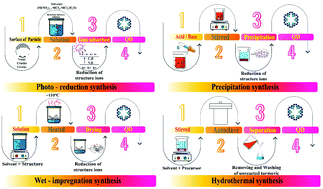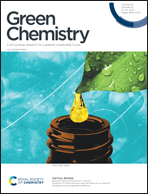Quantum dots for photocatalysis: synthesis and environmental applications
Abstract
Quantum dots (QDs) with unique properties have been widely employed for energy, environmental, and health care applications. Green natural resources, because of their renewability, sustainability, abundance, low cost, and environmental-friendliness, can be utilized for the synthesis of diverse nanoarchitectures. This critical review highlights the recent advancements in the greener and sustainable synthesis of carbon, graphene and metal-based QDs, as well as their significant environmental applications such as photocatalytic hydrogen production, degradation of hazardous contaminants/pollutants and reduction of CO2, with emphasis on the important challenges and future perspectives.

- This article is part of the themed collection: Green Chemistry Reviews


 Please wait while we load your content...
Please wait while we load your content...